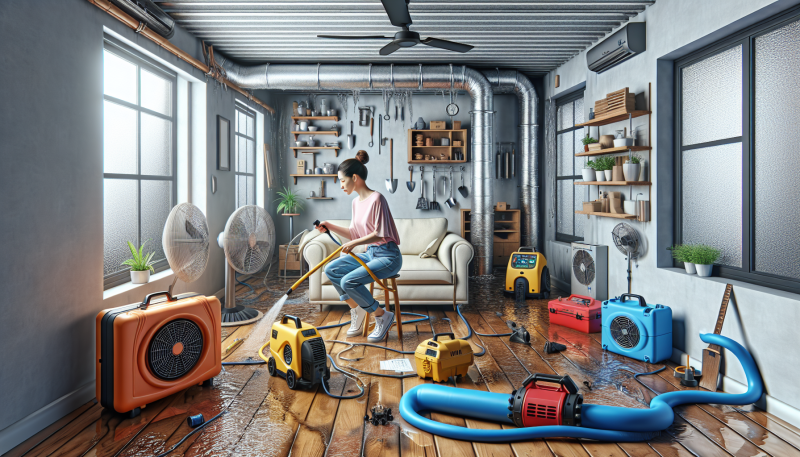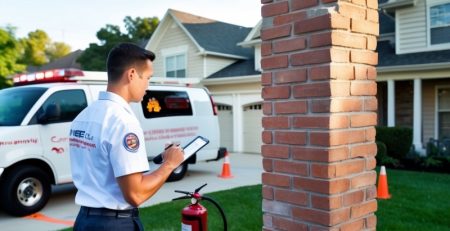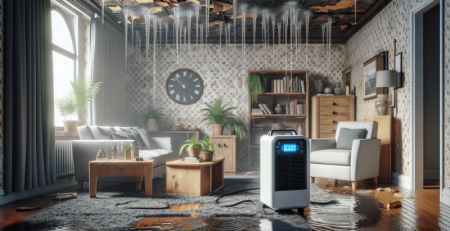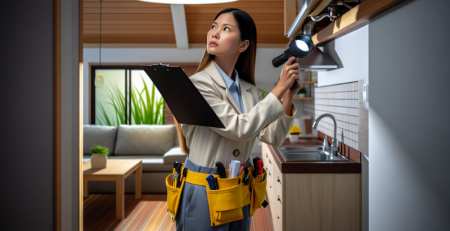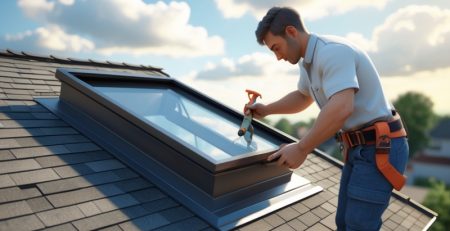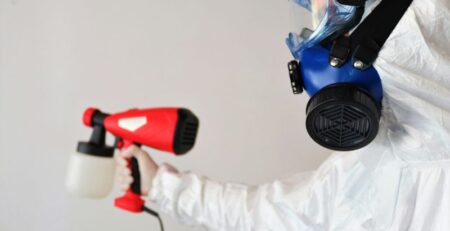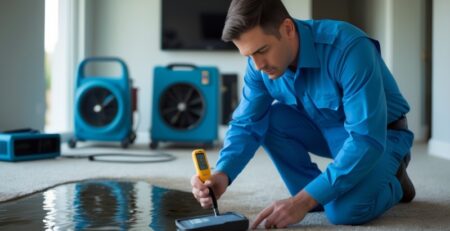Water Damage Restoration: A Step-by-Step Guide
**Water Damage Restoration: A Step-by-Step Guide**
Water damage can be a homeowner’s worst nightmare, but with the right approach, you can restore your property to its former glory. At Kraus Restoration, NJ’s leaders in water, mold, and fire damage restoration, we understand the urgency and complexity of dealing with water damage. Have you ever wondered what steps are involved in a thorough water damage restoration process? Our guide will walk you through each critical stage, ensuring you know exactly what to expect.
Water damage restoration involves several key steps, including assessment, water removal, drying, cleaning, and repair. Each phase is crucial to prevent further damage and ensure a safe living environment. In this article, we’ll break down these steps in detail, providing you with a comprehensive understanding of the restoration process.
Ready to dive into the specifics? We’ll share expert insights from IICRC certified professionals at Kraus Restoration, who bring years of experience to every project. So, without further ado, let’s explore the essential steps of water damage restoration and help you get your home back to normal.
Understanding Water Damage
Water damage occurs when excess water infiltrates your home, often due to floods, leaks, or burst pipes. This can lead to significant issues if not addressed promptly. There are three categories of water damage: clean water, gray water, and black water. Clean water comes from sources like broken pipes or rain. Gray water, slightly contaminated, might originate from appliances like washing machines. Black water is highly contaminated and poses serious health risks, often resulting from sewage backups or natural disasters.
Untreated water damage can lead to severe consequences. Structural damage is a primary concern, weakening the integrity of your home. Mold growth is another critical issue, thriving in damp environments and potentially causing respiratory problems. Health risks escalate with prolonged exposure to contaminated water, making immediate action crucial. For more information on our services, visit our services page or learn about our residential design projects. If you need assistance, don’t hesitate to contact us.
Immediate Steps to Take After Water Damage
First, ensure everyone’s safety by evacuating the affected area. Next, turn off the water source to prevent further flooding. Disconnect power to avoid electrical hazards. Acting quickly is crucial to minimize damage and reduce restoration costs. Document the damage thoroughly for insurance purposes. Take clear photos and videos of all affected areas. Make detailed notes about the extent of the damage and any items affected.
For professional assistance, consider contacting a reliable restoration service. Visit our water cleanup page for more information. Quick action can prevent mold growth and structural issues. For comprehensive support, explore our mold cleanup services. If you need further assistance, don’t hesitate to contact us.
Assessing the Extent of the Damage
To begin, conduct a thorough inspection of the affected areas. Start by examining walls, ceilings, and floors for visible signs of water damage. Look for discoloration, warping, or peeling paint. Next, use moisture meters to detect hidden water damage. These tools can measure the moisture content in materials, helping you identify areas that may not show obvious signs of damage. Additionally, infrared cameras can be useful for spotting moisture behind walls and under floors.
It’s crucial to understand when to call in experts. While some water damage can be assessed and addressed by homeowners, extensive damage requires professional assessment. Experts have the experience and equipment to identify and mitigate damage effectively. They can also provide a comprehensive plan for restoration. For more information on our professional services, visit our services page.
In conclusion, a detailed inspection and the right tools are essential for assessing water damage. If in doubt, don’t hesitate to seek professional help. For further assistance, check out our contact page.
Water Extraction and Drying Techniques
Effective water extraction begins with the right tools. Wet vacuums and pumps are essential for removing standing water quickly. For severe cases, professional services offer advanced equipment and expertise. Once the water is extracted, the drying process is crucial. Dehumidifiers, fans, and heaters work together to eliminate moisture from the air and surfaces. Positioning these devices strategically ensures optimal airflow and faster drying times.
To prevent mold growth, it’s vital to ensure complete drying. Regularly check moisture levels with a hygrometer. Move furniture and other items to allow air circulation. For comprehensive water cleanup, consider professional assistance. They provide thorough drying and mold prevention services. For more information on our water cleanup methods, visit our website.
Proper drying techniques are essential for avoiding future issues. If you need expert help, explore our mold cleanup services. For additional support, contact our team. We are dedicated to restoring your property efficiently and effectively. Learn more about our about page for detailed information on our services.
Cleaning and Sanitizing the Affected Area
Cleaning and sanitizing the affected area is crucial to prevent mold and bacteria growth. These harmful agents can cause serious health issues and further property damage. Use recommended cleaning agents like bleach, ammonia, and specialized disinfectants to ensure thorough sanitation.
For carpets, start by removing excess water with a wet vacuum. Apply a carpet cleaner and scrub gently. Rinse with clean water and dry completely. For walls, use a mixture of water and bleach. Scrub the surface and let it air dry. Furniture requires a different approach. Wipe down hard surfaces with disinfectant wipes. For upholstered items, use a fabric cleaner and ensure they dry thoroughly.
Proper cleaning and sanitizing are essential steps in water damage restoration. For more details on our comprehensive services, visit our services page. If you need assistance, don’t hesitate to contact us. For examples of our work, check out our projects section.
Repairing and Restoring Damaged Structures
Water damage often necessitates various repairs, including drywall replacement and flooring repairs. Damaged drywall must be removed and replaced to prevent mold growth. Similarly, waterlogged flooring, whether hardwood, carpet, or tile, often requires significant repairs or complete replacement.
Restoring structural integrity involves several critical steps. First, assess the extent of the damage to identify compromised areas. Next, remove any weakened materials and replace them with new, sturdy components. This process ensures the structure remains safe and sound.
Deciding whether to tackle repairs yourself or hire professionals depends on the damage’s severity. Minor issues, like small drywall patches, can be DIY projects. However, extensive damage, especially affecting structural elements, requires professional intervention. Experts have the tools and experience to handle complex repairs efficiently.
For more detailed information on our services, visit our services page. If you need assistance with water damage restoration, don’t hesitate to contact us. Explore our projects to see our successful restorations.
Preventing Future Water Damage
Regular maintenance is crucial in preventing future water damage. Inspect your home for leaks and fix them promptly. Install water alarms to detect leaks early. Proper drainage is essential; ensure gutters and downspouts are clear to direct water away from your home. Waterproofing your basement can also prevent water seepage.
Creating an emergency plan is vital. Identify shut-off valves and ensure everyone knows their location. Keep emergency contact numbers handy, including your local water damage restoration service. Regularly review and update your plan to stay prepared.
For more information on our services, visit our services page. If you need assistance with water cleanup, check out our water cleanup services. For any inquiries, feel free to contact us.
Working with Insurance Companies
Filing a water damage claim with your insurance company can be straightforward if you follow the right steps. First, document the damage thoroughly with photos and videos. Contact your insurance company immediately to report the incident. Provide all necessary details and submit your documentation promptly.
When negotiating with insurance adjusters, be prepared and stay organized. Keep a detailed record of all communications, including dates and names. Be honest but firm about the extent of the damage. It’s beneficial to get an independent estimate to support your claim.
Common pitfalls include underestimating the damage or failing to document it properly. Avoid these by being meticulous and proactive. Additionally, don’t accept the first offer if it seems too low. Understanding your policy can help you avoid these issues. For more information on our water cleanup services or to learn about our residential projects, visit our website. If you need further assistance, feel free to contact us.
Frequently Asked Questions (FAQs)
After discovering water damage, act quickly. First, turn off the water source and electricity. Then, remove valuable items and furniture from the affected area. Mold can start growing within 24 to 48 hours, so immediate action is crucial.
While some minor water damage can be handled by homeowners, significant damage requires professional help. Experts have the necessary tools and experience to ensure thorough restoration. The cost of water damage restoration varies, depending on the extent of the damage and the services needed. For a detailed estimate, you can check our services page.
Homeowner’s insurance often covers water damage, but it depends on the policy and the cause of the damage. It’s essential to review your policy and contact your insurance provider promptly. For more information, visit our contact page.
Conclusion and Final Tips
In conclusion, addressing water damage promptly is crucial to prevent further complications. This guide has detailed the essential steps for effective water damage restoration, emphasizing the importance of quick action and thorough restoration. Remember, acting swiftly can save you from extensive repairs and potential health risks.
To maintain a water-damage-free home, regularly inspect areas prone to leaks, such as basements and attics. Ensure your plumbing system is in good condition and fix any leaks immediately. Additionally, consider installing a sump pump and maintaining proper drainage around your home. For more comprehensive services, visit our services page.
Finally, keep an eye out for signs of mold growth, which can be a consequence of water damage. If you notice any, seek professional mold cleanup services. For further assistance or to discuss your specific needs, don’t hesitate to contact us. Taking these proactive steps will help ensure your home remains safe and dry.
